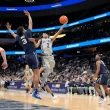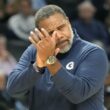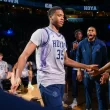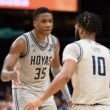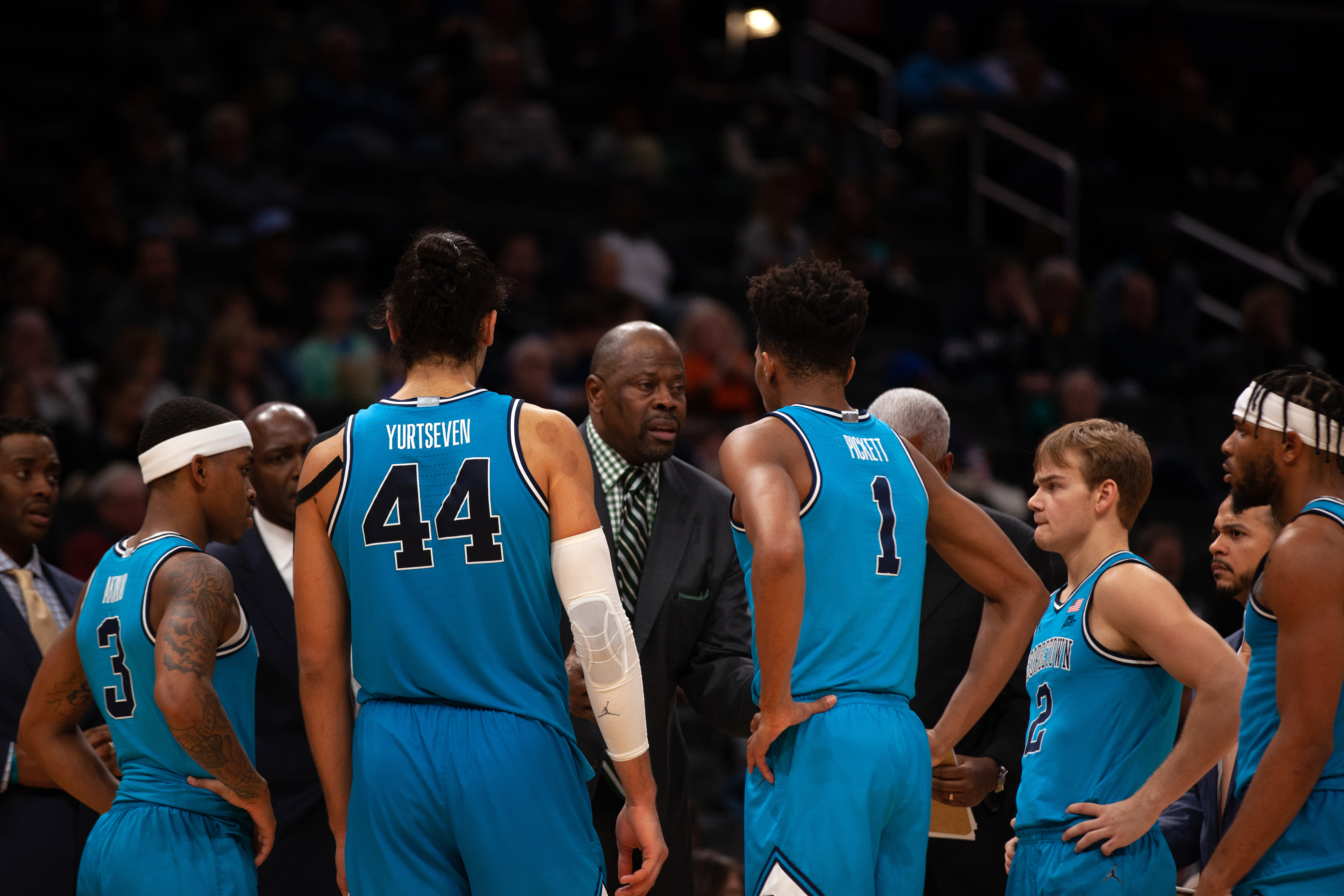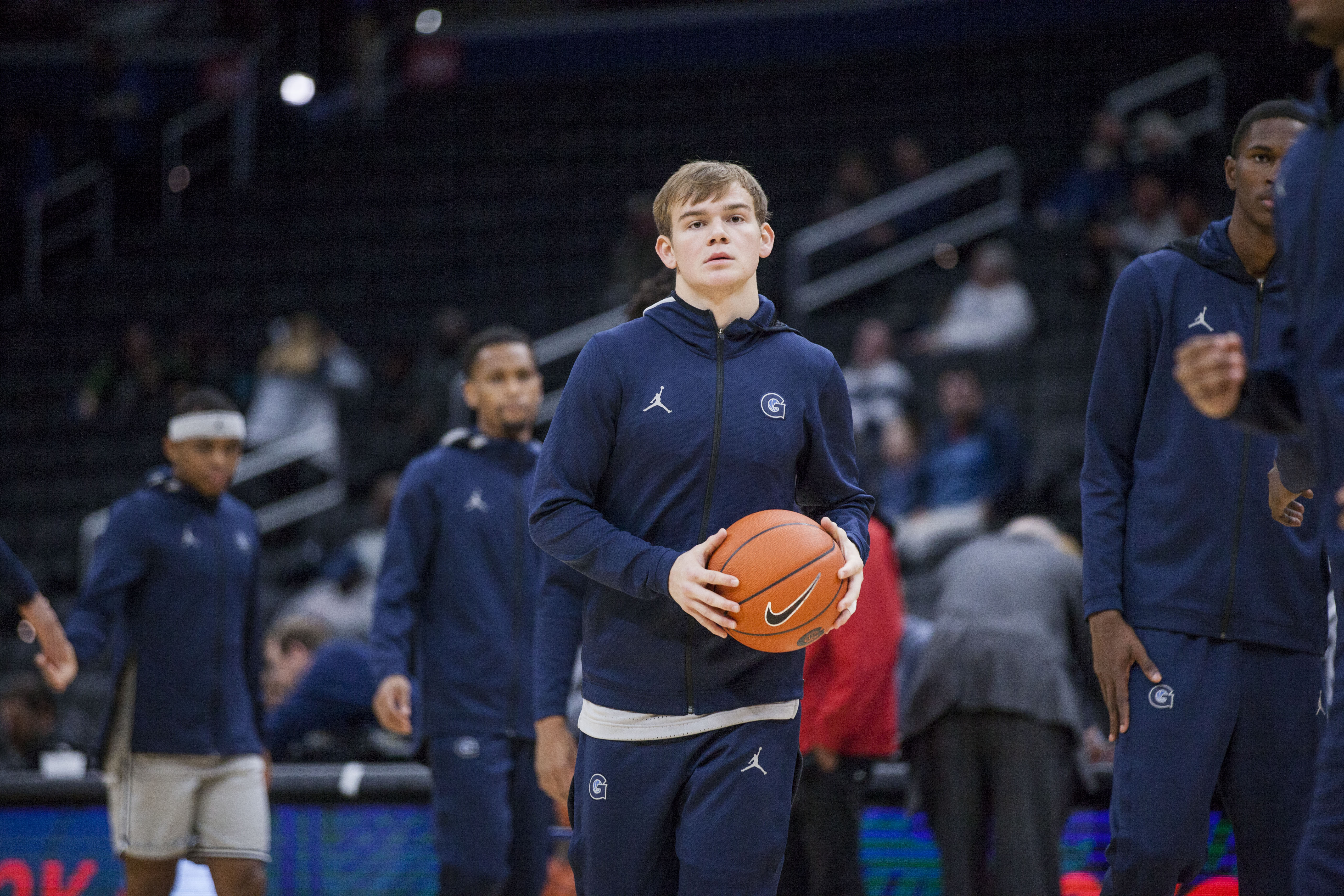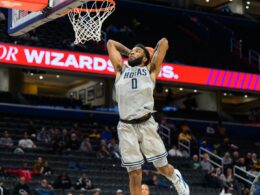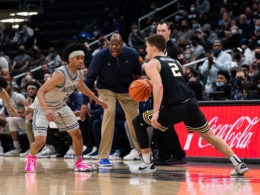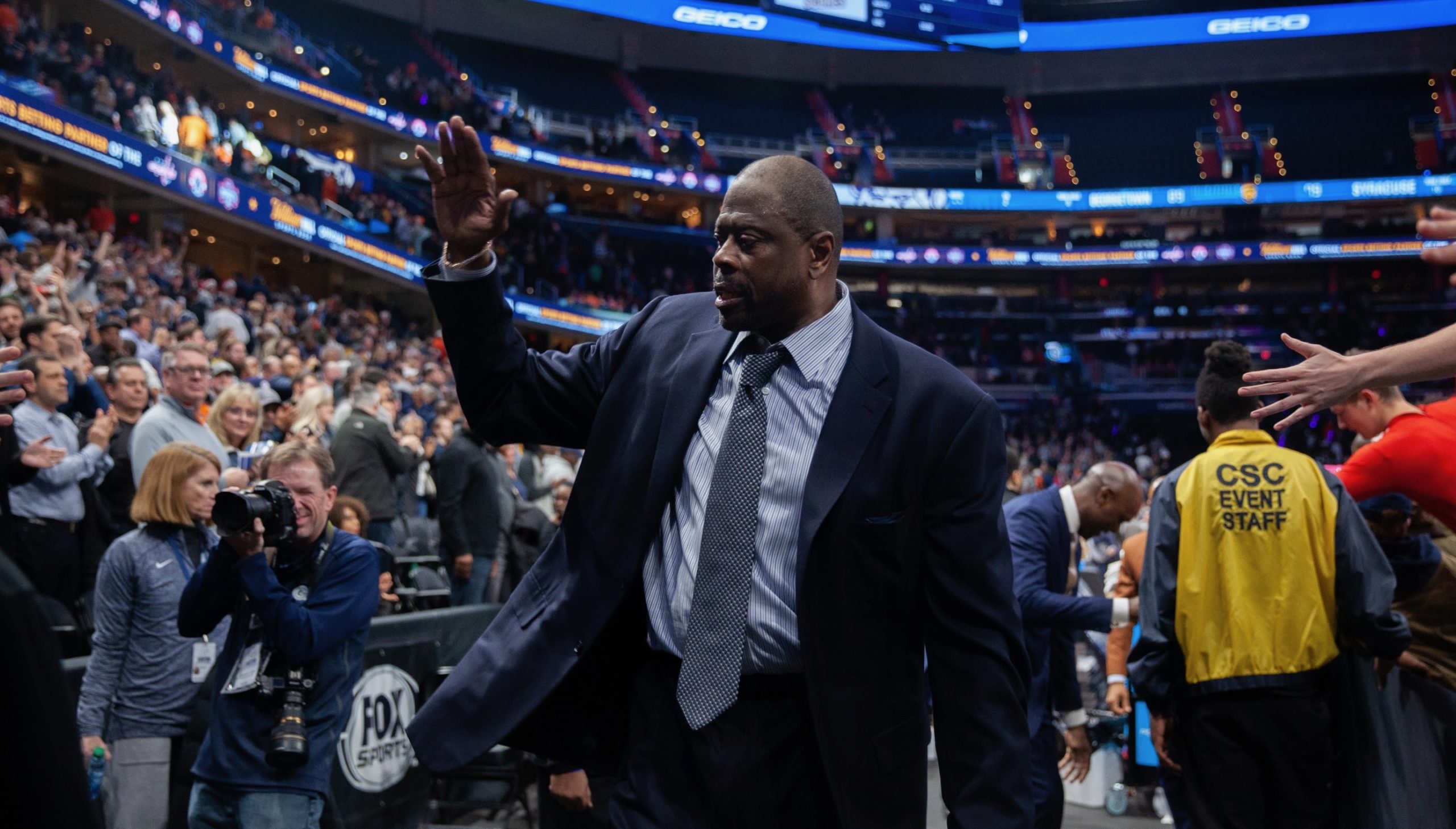The sky was falling. Armageddon had arrived. Chaos enveloped the Georgetown fanbase after it watched the Hoyas get slapped across the face by Penn State at Capital One Arena. Patrick Ewing’s offense was an unmitigated disaster for most of the game, shooting 37.7% from the field and 30.8% from three. Mac McClung looked unplayable. The rotations were a mess. After only three games into the season, the Hoyas were in crisis mode.
Things did not get better right off the bat against Georgia State. The Panthers took a 39-33 lead into halftime and the Hoyas looked to be in complete disarray. Thankfully, Ewing’s crew woke up in the second half and outscored Georgia State 58-44 to nab their third win of the season 91-83. As you can tell from the scoreboard, defense certainly was not the calling card for Georgetown’s win. So how did the offense emerge from its anemic state to propel the Hoyas to a big win? Let’s turn to the tape.
Hit the Hole Hard
As much as Ewing would love to run the offense through Yurtseven in the post, things become painfully predictable after some time. For Georgetown to have success this year, James Akinjo and Mac McClung need to be consistent and efficient double-digit scorers per game. Given their erratic outside shooting to start the year, to do so requires the two sophomores to find ways to get to the rim. Mac, in particular, did this very effectively.
In this instance, McClung did a nice job of using a pick and roll set with Yurtseven to force a quick hedge from the defender. As Georgia State quickly switched the guard back to Mac, he utilized the defender’s momentum against him by immediately attacking downhill. This no-hesitation move allowed McClung to gain a step on his defender, but the play was finished by Omer sealing off his defender, preventing any help on the drive.
James, while having a much less efficient day on offense, followed suit in the second half. Akinjo is very much a rhythm-based player. When he’s effective, he is playing with pace and instinct. This is true in regards to both his shot and his dribble penetration.
In the clip below, James keeps up the tempo while bringing the ball up the court. As Omer positions himself for a screen, Akinjo sells the defender on the pick and explodes by him to the right, drawing a foul.
Run, Run and Run Some More
This may appear obvious, but an effective way of busting out of a half-court slump is by finding ways to avoid half-court situations. Hoya fans saw how devastating the freshmen trio of Akinjo, McClung, and Josh LeBlanc could be when they got out in transition last year. We got a few glimpses of that against Georgia State.
When James receives the outlet from Qudus Wahab, he pushes the pace and his eyes immediately turn down the court. He spots LeBlanc sprinting up the middle and hits him in stride which forces the Panthers to foul him. This is exactly why LeBlanc needs to play more minutes. His energy and style of play puts pressure on the defense, especially in transition. Having a big man who effectively runs the floor will give James and Mac more opportunities to push the pace of play and put the defense on its heels.
Purposeful Movement
Too many times this season, Ewing had rolled out a lineup that would prove stagnant and jaded on the offensive end. Players would stand around, waiting for someone other than them to make a play. You don’t need to be a rocket scientist to know that’s bad basketball.
Watch how many moving parts there are to this play. Qudus setting a high screen for Mac immediately forces a quick switch from Georgia State. After getting closed out, McClung wisely hands the ball off to Allen who darts up to the top of the key. LeBlanc recognizes this and cuts hard to the basket, giving Allen the option of slipping the ball to him on the cut. Simultaneously, that cut allowed James to motion up for the handoff. The lateral movement of Akinjo and Allen in opposite directions sets an organic screen on James’s defender, setting him up for an open jumper.
There’s no real secret sauce to this play. When an offense operates as a singular unit rather than five disparate parts, good things tend to happen. It takes time for plays like this to be a regular occurrence, but this is a solid model to work off of in preparation of facing Texas’s stout defense.
Omer’s Passing
Omer Yurtseven has seemingly been the only consistent offensive threat for the Hoyas all season long. He’s recorded four double-doubles in as many games and has proven himself as Georgetown’s top option. As a result, Omer is going to have to become used to facing double-teams down low in the post. It’s only natural for defenses to send a second defender, especially given Georgetown’s three-point shooting woes (31.1% as a team).
Omer struggled facing two defenders early in this contest, consistently missing open teammates on the perimeter. Additionally, it appeared that the offense would simply run through Omer out of necessity. The ball would find Yurtseven in the post and never re-emerge. The post became a black hole of some sort. Thankfully there was a second half to make adjustments.
The most obvious adjustment Yurtseven made was his patience and anticipation. Notice how Omer doesn’t look to make his move immediately. Using his strength and size advantage, Yurtseven backs his way to the middle of the paint where he has more options. Omer has put himself in a great position to score here, forcing a second defender to step up and prevent an easy bucket. He anticipates this double a smoothly slides the ball to Pickett for a high percentage open look.
Conclusion
These are simply four aspects of the Georgetown offense which helped them avoid utter disaster Sunday night.
Would I consider the offense fixed after that performance?
Absolutely not. The Hoyas still lack any outside threat at all, which will only allow defenses to further emphasize preventing Omer from beating them in the post. The Hoyas still turn the ball over too many times and endure scoring droughts when the sophomore guards are not in the game.
But these four points highlight areas where the Hoyas improved as the game progressed and that should allow fans to feel better about going into the Empire Classic against Texas. Regardless, Ewing and company need a much more complete game if they want to see Duke instead of Cal Friday night.
